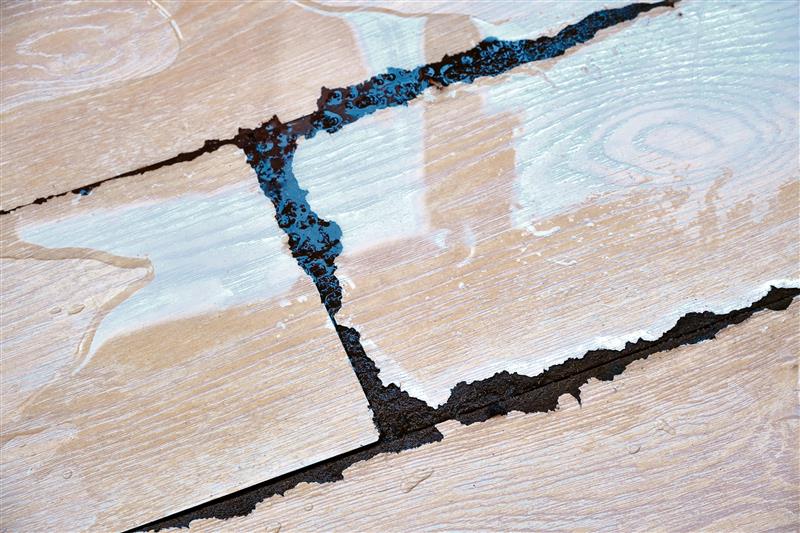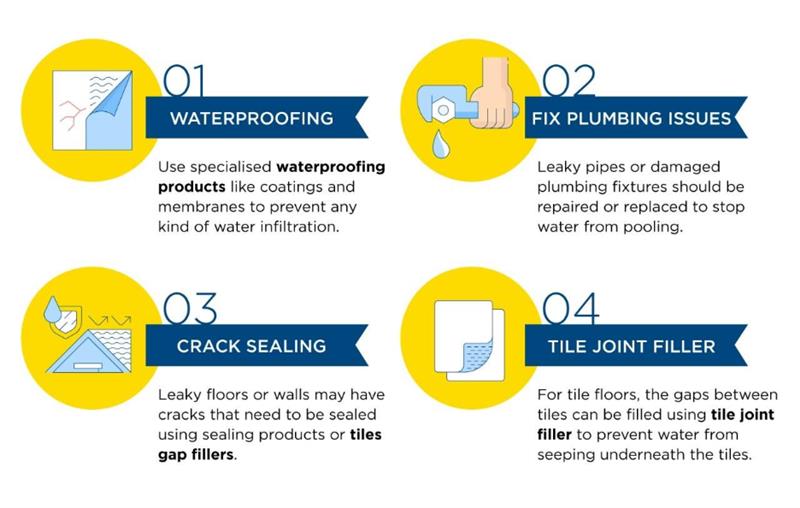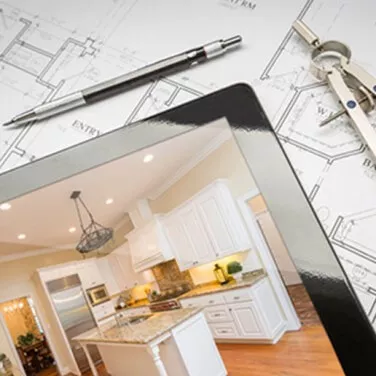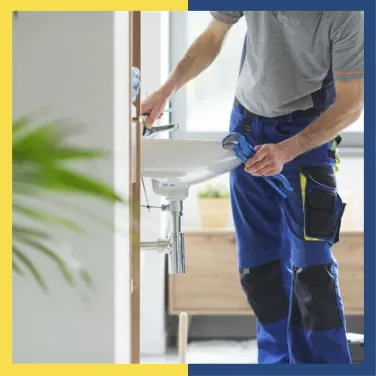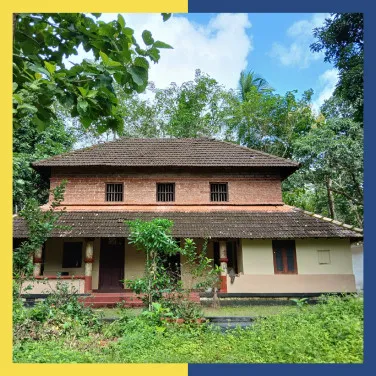How to identify and fix water leakages from floors: A complete guide
Water leakage from the floor is a community-level concern that can compromise both the structural integrity and aesthetic appeal of a building. Early detection of signs such as damp patches, water stains, cracked flooring, or mould growth is crucial to prevent further damage. Effective solutions include waterproofing, plumbing repairs, crack sealing, and improving drainage systems. Preventive measures during construction, such as applying an elastomeric waterproofing coating on the concrete surface beneath tiles and using high-quality grouts to seal tile joints, can help avoid water leakage issues in the future. Regular maintenance and inspections are essential for ensuring long-term protection.
Table of Contents
- It’s important to distinguish between two types of issues:
- The importance of addressing water leakages from floors
- Inter-floor water leakage: Why it’s a bigger problem than it seems
- Section 1: Understanding the signs of water leakage from the floor
- Section 2: Understanding underlying causes of water leakages through the floor
- Section 3: How to address water leakages through floors in existing houses
- Section 4: Proactive measures for new constructions
- Section 5: Maintenance and long-term solutions
- Conclusion
- FAQs
Water leaking from the floor is a serious issue that can affect both the structural integrity and the aesthetic appeal of a building. Whether it’s due to plumbing issues, failed waterproofing, or water seeping between floors in a multi-storey building, addressing floor-related water leakage promptly is critical.
It’s important to distinguish between two types of issues:
- In builder flats or apartment settings, leakage from a bathroom or kitchen on an upper floor can damage the ceiling of the unit below. This is usually caused by poor tile joint sealing, cracked grouts, or failed waterproofing and must be treated at the source.
- In buildings with high water tables, groundwater pressure can sometimes cause water to rise up from below. This is common in basements or ground-contact floors and requires specialised waterproofing treatments like pressure-resistant membranes or employing effective sub-structure drainage.
Ignoring either case can lead to long-term issues such as weakened foundations, flooring deterioration, mould growth, and even neighbour disputes.
The importance of addressing water leakages from floors
Ignoring water leakage can lead to significant structural damage, including weakening of the building skeleton and load-bearing walls and floors. Water leakage can also encourage mould and mildew growth, which can degrade indoor air quality and result in health issues. Furthermore, this kind of a water leakage may compromise the aesthetic of the interior by causing floor tiles to loosen, discolour, or crack. The solution lies in timely detection and repair, using the right waterproofing products and techniques to prevent further damage. Taking action early can save homeowners significant repair costs and protect the building’s structural health.
Inter-floor water leakage: Why it’s a bigger problem than it seems
In high-rise apartments and builder flats, water leakage from one floor often affects the flat below, not the one where the issue originates. For example, seepage from a bathroom or kitchen in an upper unit may drip through the slab and damage the ceiling of the lower unit. This leads to frustration and conflict among residents, especially in societies where maintenance and repairs are not centrally managed. To prevent disputes and maintain a good relationship with neighbours, timely waterproofing treatments and proper tiling practices are essential. In such shared living spaces, water leakage is not just a personal inconvenience - it’s a community-level concern that requires proactive action.
Section 1: Understanding the signs of water leakage from the floor
Water leakage from floors can damage interiors, create hygiene issues, and in multi-storey buildings, even affect neighbours. Early detection helps in taking prompt action to avoid deeper structural damage or recurring leakage. Here’s how to identify floor leakage based on the most commonly used flooring surfaces:
1. Tile Flooring (Most Common in Indian Homes)
Tile floors (ceramic, vitrified, or porcelain) do not typically show visible discolouration or bubbling due to water leakage. However, signs of seepage can still be detected in the following ways:
- Loose or hollow-sounding tiles: If tiles start sounding hollow or move slightly under pressure, it may indicate water has seeped below.
- Cracked grout lines or joints: Over time, moisture can weaken grout or tile joint filler, causing cracks or gaps. These gaps allow water to seep in, especially in wet areas like bathrooms or kitchens.
- Efflorescence near skirting tiles: A white powdery substance may appear along tile edges or skirting. This indicates salts being pushed up by water from below.
- Damp patches on walls or ceilings below (in upper floors): In multi-storey buildings, water leakage from floors is often detected by ceiling stains in the unit below, especially under toilets or kitchens.
2. Cement Flooring
Although less common today, some older or rural homes do use cement floors (oxide or IPS). Signs of leakage here may include:
- Dampness or dark patches: Water seepage from below the slab can appear as damp, darker zones on the cement surface.
- Hairline cracks with moisture: Seepage may widen existing cracks, especially if groundwater pressure is involved.
- Peeling paint near floor edges: Water rising through the cement can affect adjoining surfaces or walls.
3. Wooden or Laminate Flooring (~1–2%)
Wood and laminate floors are very sensitive to moisture and may show more visible signs of water intrusion:
- Swelling or soft spots: Moisture causes wood to swell or become soft underfoot.
- Warping or lifting of planks: Prolonged leakage can distort the shape of the wood, leading to uneven floors.
- Peeling or flaking finish: The polish or finish layer may start peeling due to moisture underneath.
4. Generic Signs Across All Floor Types (Especially in Upper Floors)
These signs often appear when floor waterproofing fails or plumbing is defective:
- Persistent damp or musty smell: A consistent odour in wet areas like bathrooms or under sinks may indicate concealed leakage.
- Water stains on ceilings below (in apartments): This is a telltale sign of slab seepage due to failed waterproofing or leaking bathroom fittings above.
- Mould or fungus near corners, skirting, or wall bases: Even if not visible on the floor, moisture can travel from below and show up in corners or low wall areas.
Section 2: Understanding underlying causes of water leakages through the floor
To effectively address water leakage issues, it’s important to understand the root causes of the problem. Without identifying the underlying reasons, any attempts at repair may be temporary and could lead to recurring problems.
Water leakages through floors typically results from one or more underlying causes:
Groundwater seepage
Groundwater seepage occurs when water from the ground below the building’s foundation rises through cracks or porous materials in the floor or foundation. This can happen in areas with a high water table, where the ground is naturally saturated with water. When the soil surrounding the foundation is overly saturated, water can force its way into the building, leading to water leakage issues on the floors and walls.
In addition to being a year-round concern in areas with high water tables, groundwater seepage can also be seasonal. During periods of excessive rainfall or flooding, the water table rises significantly, increasing the likelihood of water seeping into the foundation. This is particularly problematic during the rainy season or after flooding events when the ground becomes overly saturated, overwhelming existing drainage systems and leading to higher rates of water infiltration.
Plumbing failures
Plumbing failures are a common cause of floor water seepage, especially in older homes with ageing plumbing systems. Leaky pipes, corroded or burst pipes, and faulty plumbing fixtures can all lead to water escaping from the system and pooling on the floor. Over time, materials like copper, galvanised steel, or cast-iron pipes can corrode, causing small leaks that go unnoticed until they result in visible water damage. Additionally, faulty seals around plumbing fixtures or connections and clogged drainpipes can lead to water backflow or overflow, seeping into the floor and causing damage. In these cases, water can accumulate under the flooring, leading to issues like cracked tiles, mould growth, or warped wood.
Drainage issues
Improper drainage systems can result in water collecting around a building’s foundation when water is not directed away from the structure. This often occurs due to poor grading, clogged gutters and downspouts, or broken and blocked drains, which fail to move excess water away from the foundation. When the ground around the building slopes towards it, or when gutters overflow because of blockages, water can pool near the foundation. Over time, this accumulated water increases pressure on the foundation walls, potentially causing cracks and seepage or even rising onto the house floor.
Design flaws
Design flaws can also play a crucial role in contributing to water leakages through floors, especially if the structure is poorly planned in relation to the surrounding environment or site contours. These flaws are often overlooked during the design phase but can have long-lasting effects on a building’s ability to withstand water intrusion. Below are some common design flaws that can lead to water leakage:
- Improper placement of the structure: Buildings constructed without considering the natural contours of the land can be more vulnerable to water leakage. If the land slopes toward the building, water can easily flow toward the foundation, increasing the likelihood of seepage. Proper site grading and an understanding of the natural flow of water around the building are essential to ensure that water is directed away from the foundation rather than toward it. When a structure is placed too close to a water reservoir, river, or lake, the building becomes more prone to water seepage.
- Misdirection of rainwater: A poor design can lead to rainwater being directed toward the building's foundation rather than away from it. This might occur due to improper placement of gutters, downspouts, drains, or a lack of sufficient water diversion features in the landscape.
- Plinth design flaw: The plinth is the base or the lower part of the foundation, often exposed to moisture. If the plinth is not designed to be sufficiently raised or sealed, it can allow water to seep upward into the building.
- Foundation design: A flawed foundation design may fail to provide the necessary protection against groundwater seepage. For example, if the foundation walls are not adequately waterproofed or if there is no moisture barrier in place, groundwater can penetrate the structure over time.
Section 3: How to address water leakages through floors in existing houses
The first step in fixing this kind of a water leakage is identifying its source. Homeowners can begin by visually inspecting their floors, walls, and foundation. Once the source is identified, the following solutions can be applied as required:
Long-term solutions
- Plinth protection: Apply waterproofing measures around the base of the foundation to prevent water from rising up into the walls and floors.
- Capillary break: A capillary break prevents moisture from travelling upwards through the foundation by breaking the continuous path through which water could rise.
- Replace corroded pipelines: Old pipes should be upgraded to PVC or CPVC.
- Re-grouting tiles: Damaged or missing grout allows water to seep in. Remove old grout and reapply waterproof tile grout.
- Correct slope of wet areas: Ensure bathrooms, balconies, and terraces have correct slopes toward drainage points.
- Improve water outlet design: Check for ponding in balconies or terraces; redesign or install additional drain points if needed.
- Retrofit waterproofing: If existing waterproofing is ineffective, consider upgrading the system using reliable and long-lasting methods suited to the site conditions.
Section 4: Proactive measures for new constructions
Foundation waterproofing
Waterproofing the foundation is one of the most effective measures to prevent water seepage into a building.
High-quality materials for new construction
- Durable pipes and fixtures: Using corrosion-resistant, durable plumbing materials helps prevent plumbing failures in the long term.
- Waterproof tile adhesives: In wet areas, use high-quality waterproof adhesives to secure tiles and prevent water from seeping beneath.
Drainage systems
- Site grading and external drainage: Ensure the land slopes away from the foundation at a 5–10% gradient.
- Effective drainage solutions:
- French drains
- Sump pumps
- Gutters and downspouts
- Channel drains
- Internal drainage system for upper floors: Ensure proper slope toward traps, concealed leak-proof pipes, access panels, and balcony drainage.
Section 5: Maintenance and long-term solutions
- Regular inspections: Inspect plumbing, flooring, and drainage systems regularly.
- Routine repairs: Check for cracks or damage in waterproofing systems and repair promptly.
Conclusion
Water leakage in floors is not just a cosmetic issue but a serious structural concern that needs immediate attention. Whether it’s seepage from the ground or leakage from bathrooms and balconies on upper floors, the key is to identify the source and act quickly.
FAQs
How to stop water leakage?
Water leakage can be prevented by identifying its source and applying appropriate waterproofing products.
How to stop water leakage from the ground?
Foundation waterproofing, plinth protection, and proper drainage systems are essential.
How to stop water leakage from tiles?
Sealing tile joints with fillers, re-grouting, or replacing damaged tiles helps prevent leakage, but the root cause must be fixed first.
How to find water leakage in the home?
Look for water stains, dampness, mould, higher water bills, or musty odours.
How to fix water leakage in the bathroom?
Identify the leak, repair plumbing, re-grout tiles, and apply waterproofing products.
Get Professional Waterproofing Solutions Today
Fill The Form below to took free site evaluation by Dr. fixit point safe painting service expert
Get Professional Waterproofing Solutions Today
Fill The Form below to took free site evaluation by Dr. fixit point safe painting service expert




